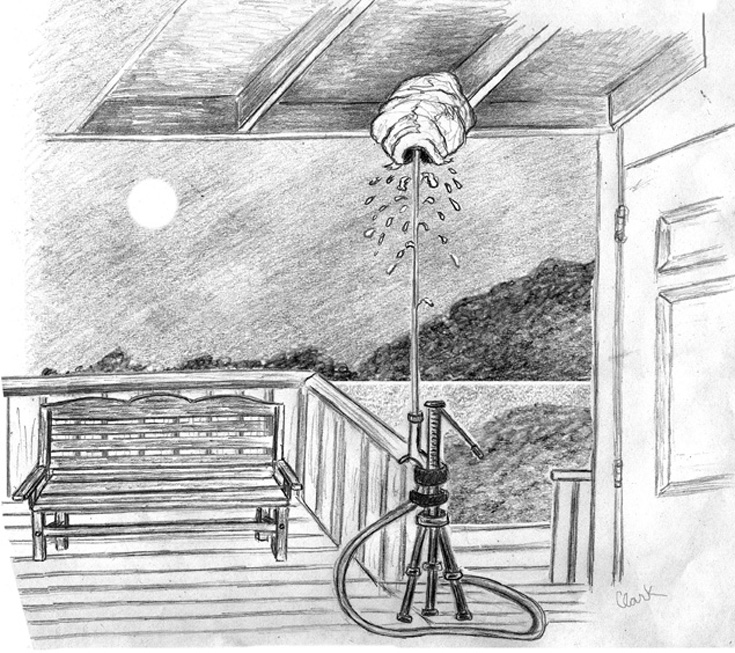
Dear Bird Folks,
Last week you declared it was safe for us to put our birdfeeders out again, but you didn’t mention anything about birdbaths. Are they okay to put out now, too?
– Eric, Chatham, MA
Just to be clear, Eric,
I only pointed out reports that last spring’s mysterious illness that had affected birds in other parts of the country had slowed down and didn’t appear to be heading our way. I was merely reporting on what I had read. I don’t have the authority or the power to make any declarations…but I wish I did. Can you imagine? If I had that kind of power the first thing I would do is declare that every sink in America would have three faucets: one for hot water, one for cold water and one for soft serve. We could wash our hands, have a helping of ice cream and then wash up again, without ever moving. I realize that sending a person to Mars would be a big deal, but the creation of the three-faucet sink would be even bigger. We can go to Mars some other time.
Offering water has always been one of the best ways to attract birds. Bird feeders are great, but unfortunately for people like me, not all birds eat birdseed, but they all need water. In most areas, water is readily available and relatively cheap…unless you still buy it in those stupid plastic bottles. Birdbaths, however, have one major problem: they get dirty quickly. They are just like any bathtub that’s been used. In addition, birds have the habit of pooping in their own water. That might sound gross, but I have a friend who lets her dog drink out of the toilet bowl. Talk about disgusting. Then again, I don’t think the dogs in my fancy neighborhood drink from toilet bowls. I’m pretty sure they only drink bottled water, the imported kind.
Speaking of water: The other day I was out of the house early. About a mile down the road I saw a charm of goldfinches drinking from a puddle at the end of someone’s driveway. At first I barely noticed them and then I started to think about it. We hadn’t had rain in days and there were no other puddles on the street. These finches were drinking driveway runoff and that’s not good. Whatever products the people had used to perhaps wash their car, or clean their outdoor grill or sprayed on their lawn was now being slurped up by goldfinches. We all wash stuff outside, but we should be aware of leftover water and disperse any lingering puddles. Water runoff isn’t safe, which is why we don’t let dogs drink it. Dogs should only be allowed to drink from something classy, like a toilet bowl.
Speaking of toxic stuff: Last week we discovered a rather large wasps’ nest above our back door. It was the classic Japanese lantern-shaped gray nest, about the size of a football. I couldn’t believe it had gotten so big without us noticing it sooner. (I really must stop being so focused on birds.) Like most people, I have a list of phobias, but bees and wasps aren’t one of them. They don’t bother me at all. (Although if it were a nest of snakes, I’d have down burned the entire house and moved away.) My wife also likes bees, but she is highly allergic to their stings. I spent the next few hours trying to determine if they were yellow jackets or perhaps paper wasps, which are less aggressive. Even after careful study I still wasn’t sure, but my wife was sure. She didn’t care what they were; they had to go. Fine, but how? In the old days I would have bought a can of nasty spray and sprayed the nest and that would have been the end of it. Not anymore. I needed to think more like MacGyver.
That night, after dark, I took the tripod off my birding scope and lashed a high-powered garden hose to it. Even aggressive wasps are less so when it’s dark, which gave me a chance to place my MacGyver contraption just below the nest. After aiming it carefully, I walked around the corner and turned on the water for a few minutes. In the morning I could see the water had done its job. The nest had come apart and most of the wasps were gone, just a few remained (probably waiting for the insurance adjuster). On the ground below were dozens of wasp eggs, larvae and pupa. I felt bad about ruining such a productive nest, but the birds in my yard were thrilled. Cardinals, orioles and catbirds quickly grabbed the displaced eggs and larva, and carried them off to feed their own babies. Watching the action made me realize that if I had sprayed this nest with poison, as most folks would have, the wasps would be dead, but the baby catbirds, orioles and cardinals would have also been fed the poison. I’m glad I chose the MacGyver method.
I know I’ve gotten off topic, Eric, but since no one has asked me about wasps and puddles for a while, I figured I’d bring it up myself. As for your birdbath: Many states now say feeders and baths are once again okay to use, and I’m guessing our state will do the same thing soon. Whether you put your birdbath out now or not, just remember to keep it clean. It’s important. Here’s something else that’s important: If you use a hose to fill your birdbath, it should be lead-free and safe for drinking water. Most garden hoses found in stores aren’t lead-free, but if you look hard enough you can find one. And while you’re looking, see if you can find a garden hose that also dispenses soft serve. That’s the one I want.